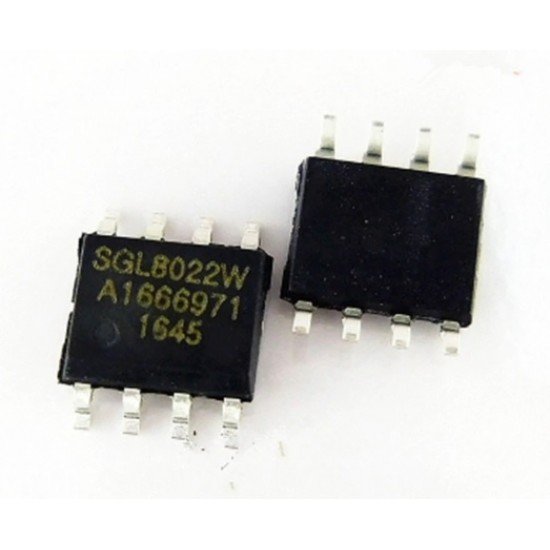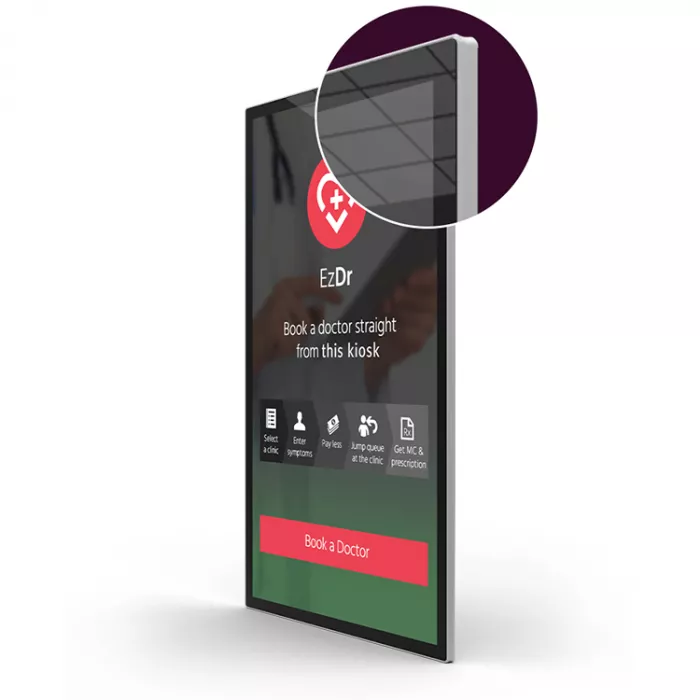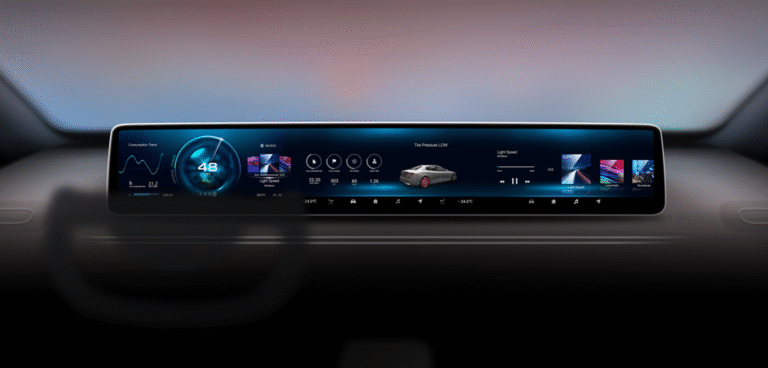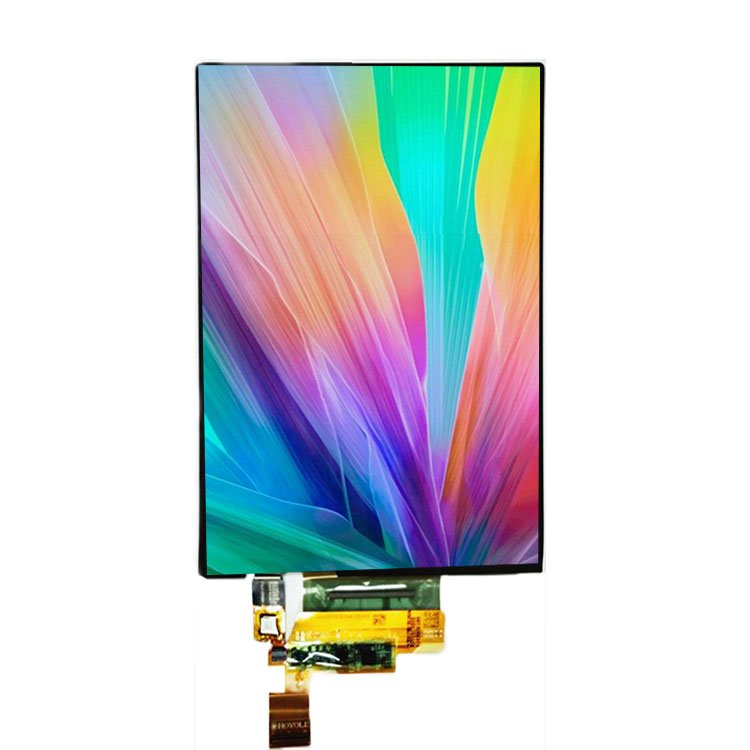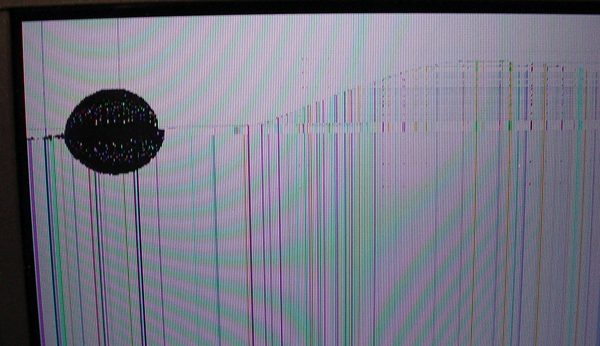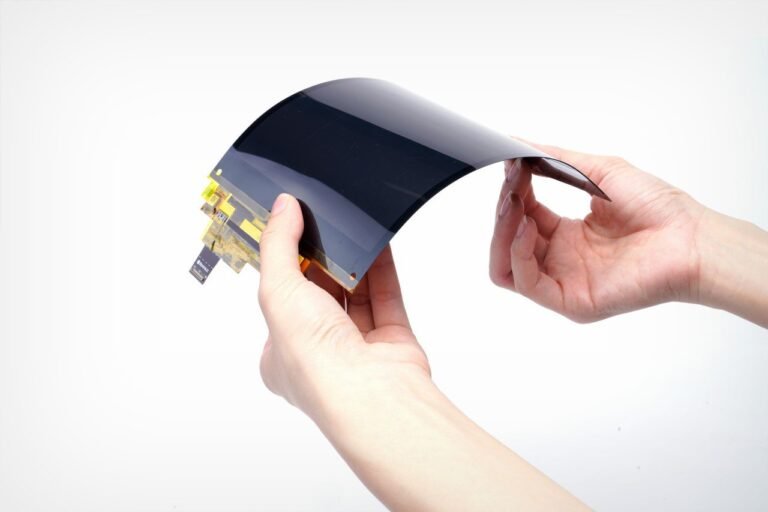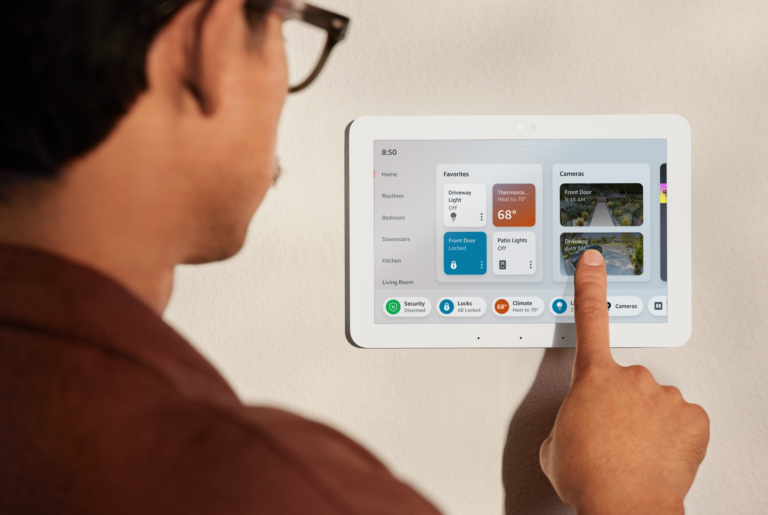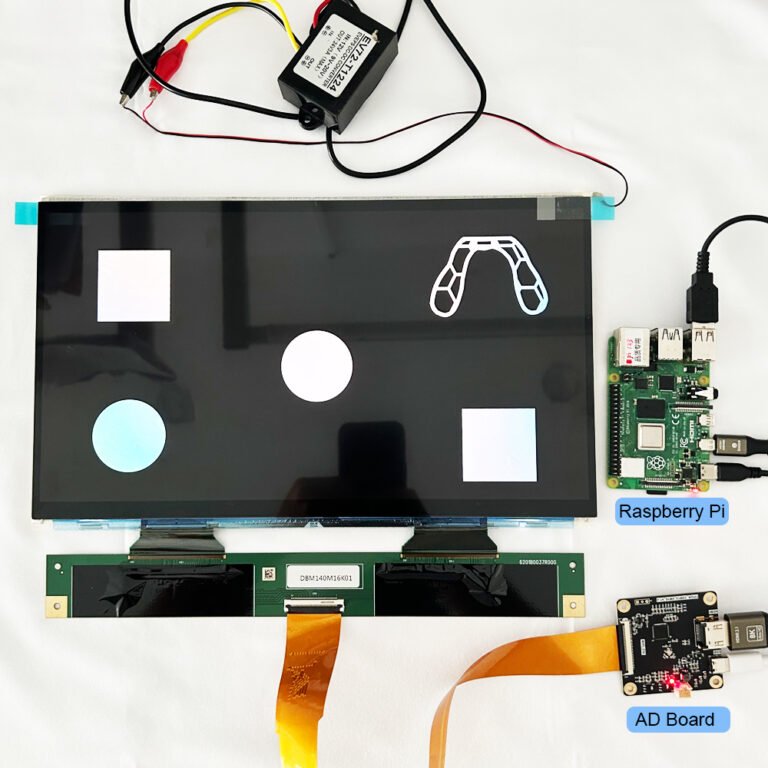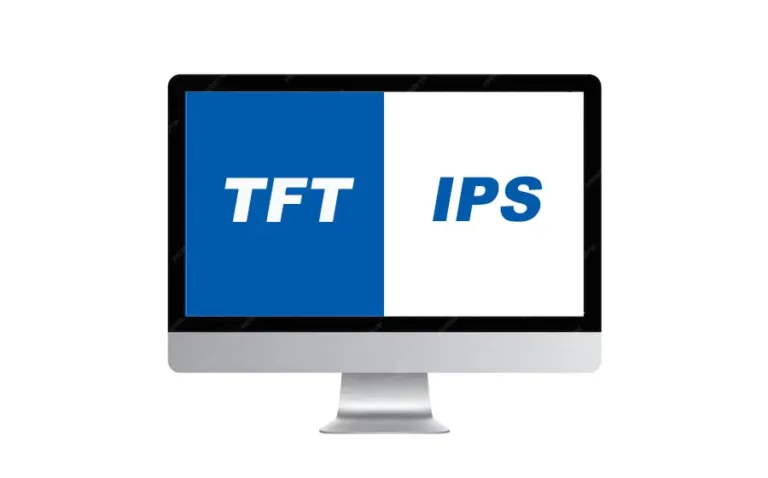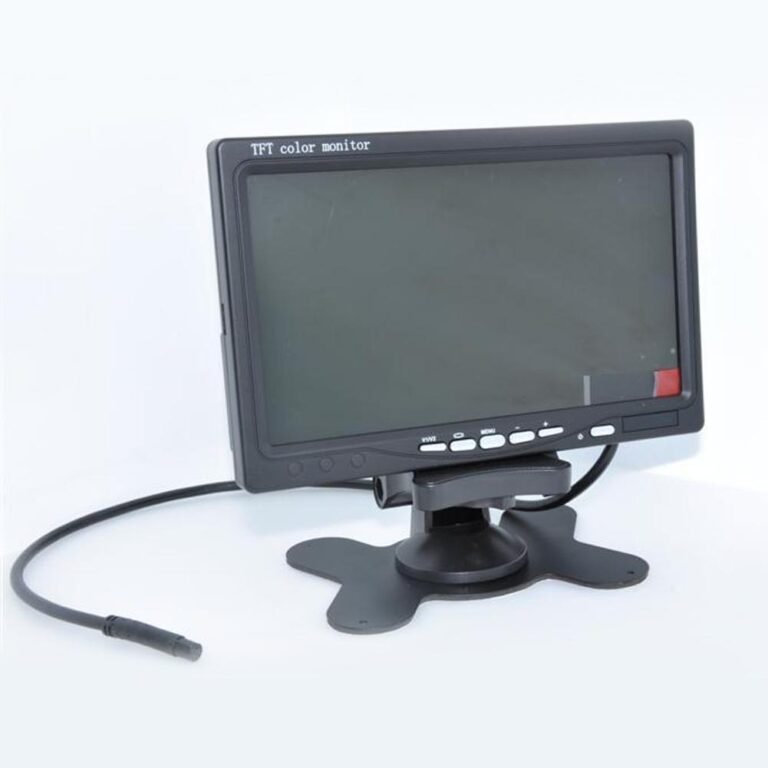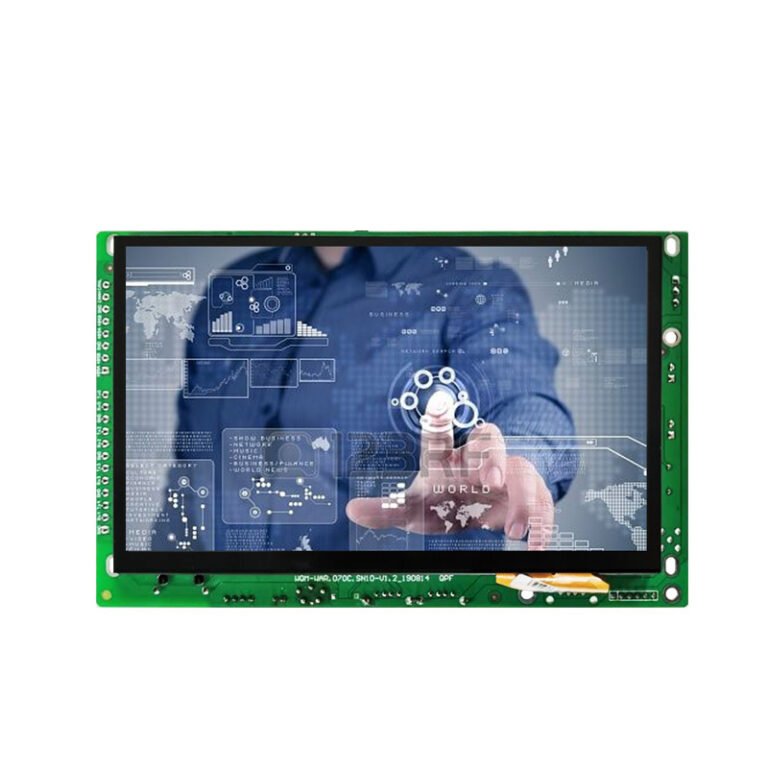Understanding the Touch IC Chip
A Touch IC (Integrated Circuit) chip is a specialized microcontroller or ASIC (Application-Specific Integrated Circuit) that processes input signals from a touchscreen sensor. It acts as the “brain” of the touch interface, interpreting physical touches into digital signals that the device’s main processor can understand.
Unlike general-purpose processors, a touch IC is designed specifically for capacitive or resistive touch sensing, ensuring high accuracy, low latency, and reliable performance across different environmental conditions.
How a Touch IC Works
The working principle of a touch IC depends on the type of touchscreen technology it supports — typically capacitif ou résistif.
- Signal Detection
- In capacitive touchscreens, the touch IC monitors changes in the electrostatic field when a finger or stylus comes into contact with the glass.
- In resistive touchscreens, the IC detects changes in electrical resistance when two conductive layers are pressed together.
- Traitement du signal
- The chip amplifies, filters, and digitizes the analog touch signals.
- Advanced algorithms help distinguish between intentional touches, accidental contact, and noise.
- Coordinate Calculation
- The IC calculates the precise X and Y coordinates of the touch.
- For multi-touch screens, it tracks multiple touch points simultaneously.
- Data Transmission
- The touch IC sends processed touch data to the main CPU via communication interfaces like I²C, SPIou USB.
Core Functions of a Touch IC Chip
A well-designed touch IC performs several critical functions:
- Détection du toucher: Recognizing single or multiple touch points accurately.
- Gesture Recognition: Detecting swipes, pinches, and rotations.
- Noise Filtering: Minimizing interference from display signals or power fluctuations.
- Water and Glove Touch Support: Maintaining responsiveness in challenging conditions.
- Low Power Operation: Reducing energy consumption for battery-powered devices.
- Firmware Upgradability: Allowing performance improvements or feature additions post-deployment.
Types of Touch IC Chips
Capacitive Touch ICs
Used in most modern consumer devices, these ICs offer high sensitivity, multi-touch support, and durability due to their glass surface. Common in smartphones, tablets, kiosks, and car infotainment systems.
Resistive Touch ICs
More common in industrial and rugged applications, resistive ICs work with any input tool and offer high accuracy, but with lower optical clarity and no multi-touch support.
Hybrid Touch ICs
Some ICs can handle both capacitive and resistive inputs or incorporate features like stylus pressure sensitivity for specialized applications.
Key Performance Parameters
When evaluating a touch IC, engineers often look at:
- Précision du toucher: Precision of coordinate detection.
- Report Rate: Speed at which touch data is sent to the host processor.
- Consommation électrique: Important for portable devices.
- Environmental Tolerance: Operation under high humidity, temperature extremes, or exposure to sunlight.
- EMI Immunity: Resistance to electromagnetic interference from other components.
- Interface Support: Compatibility with the device’s architecture.
Common Applications
Touch IC chips are found in:
- Électronique grand public: Smartphones, tablets, smartwatches, and e-readers.
- Automobile: In-dash displays, infotainment systems, and navigation units.
- Panneaux de contrôle industriels: Touch-based HMIs (Human Machine Interfaces).
- Dispositifs médicaux: Patient monitoring systems and diagnostic equipment.
- Retail and Hospitality: POS terminals, self-service kiosks, and ticketing machines.
Selecting the Right Touch IC Chip
Choosing the right touch IC depends on:
- Type d'affichage: Capacitive vs. resistive technology.
- Screen Size and Resolution: Larger displays may require more powerful ICs.
- Operating Environment: L'appareil sera-t-il utilisé en extérieur, dans des conditions humides ou dans des environnements poussiéreux ?
- Types d'entrée: Doigts, gants, stylet ou gestes multi-touch.
- Contraintes d'alimentation: Les appareils alimentés par batterie peuvent nécessiter des puces ultra-basse consommation.
- Exigences d'intégration: Compatibilité avec les pilotes d'affichage et les processeurs principaux.
Fabricants populaires de circuits intégrés tactiles
Bien que de nombreuses entreprises développent des CI tactiles, quelques noms bien connus incluent :
- Goodix – Large utilisation dans les smartphones et tablettes.
- Synaptics – Réputé pour ses contrôleurs tactiles haut de gamme et l'intégration d'empreintes digitales.
- FocalTech – Populaire sur les marchés grand public et industriel.
- Cypress/Infineon – Propose des solutions tactiles robustes de grade automobile.
- ELAN Microelectronics – Souvent présent dans les appareils grand public de milieu de gamme.
Tendances futures de la technologie des CI tactiles
L'industrie des CI tactiles continue d'évoluer avec :
- Conceptions ultra-basse consommation: Pour les wearables et appareils IoT.
- Taux d'échantillonnage tactile plus élevés: Pour des expériences de jeu et de dessin plus fluides.
- Reconnaissance de gestes basée sur l'IA: Pour des interactions plus intuitives.
- Support d'écrans flexibles et pliables: Avec la diversification des facteurs de forme d'affichage.
Conclusion
Les La puce de circuit intégré tactile est un héros méconnu de l'électronique moderne, garantissant discrètement que chaque tapotement, glissement et pincement soit détecté et exécuté avec précision. Que ce soit dans un smartphone, un tableau de bord automobile ou un panneau industriel, ce minuscule composant est au cœur des interfaces tactiles intuitives sur lesquelles nous comptons quotidiennement.
Comprendre son rôle et ses capacités aide les concepteurs de produits et les ingénieurs à choisir la meilleure solution tactile possible – une solution qui équilibre performance, durabilité et expérience utilisateur.


